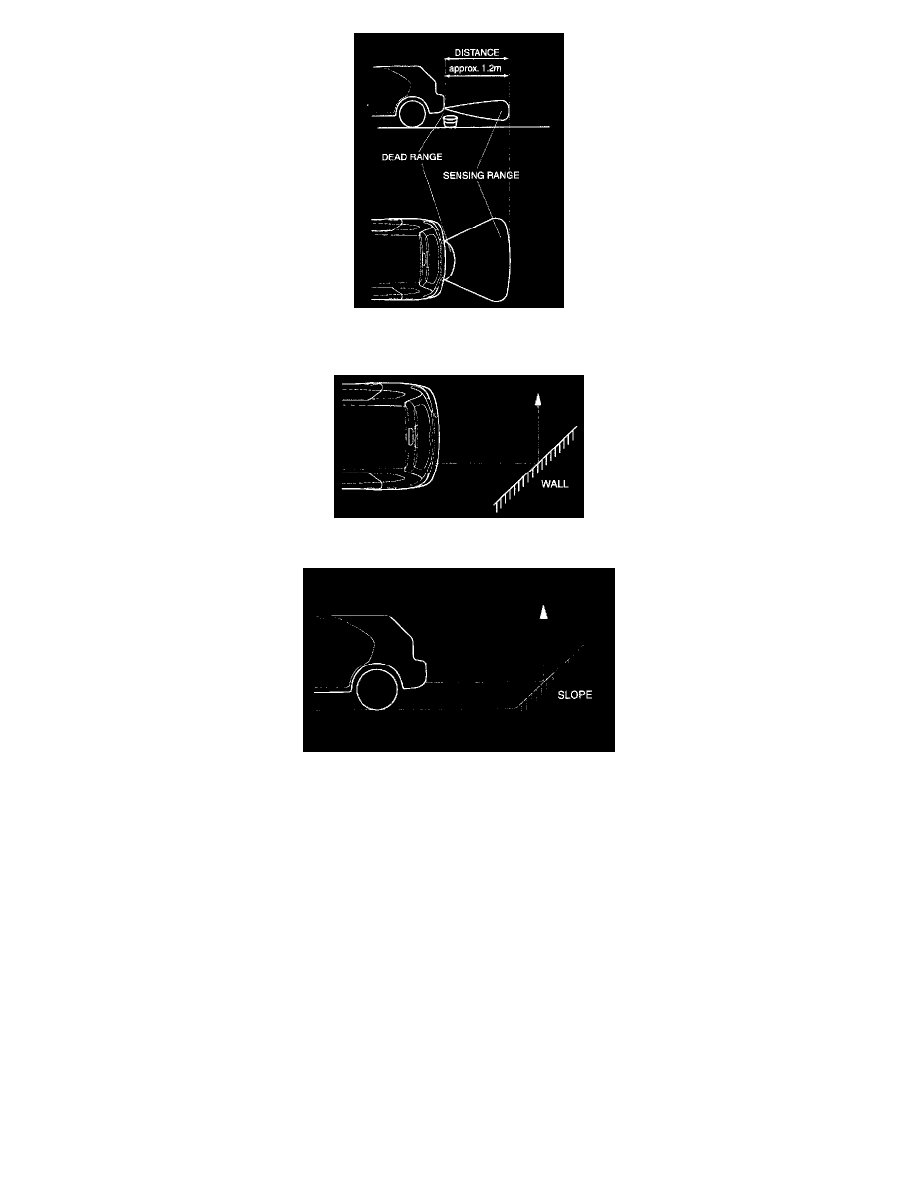Sorento 2WD V6-3.8L (2007)

2. Cotton, snow and other material absorbing ultrasonic wave
(for example, fire extinguisher device covered with snow)
3. Reversing toward the sloped walls.
4. Reversing toward the sloped terrain.
4. False alarm may operate in the following condition:
Irregular road surface, gravel road, sloped road and grass. Upon alarm generation by grass the alarm may be generated by rock behind grass.
Always visually check the area behind the vehicle before backing up.
The sensors cannot discriminate between materials.
5. Sensors may not operate correctly in the below conditions.
Ensure sensors are clean from mud or dirt.
1. When spraying the bumper, the sensor opening is covered with something in order not to be contaminated. If sensor opening is contaminated
with mud, snow, or dirt, detection range will be reduced and alarm may not be generated under the crash condition. Dirt accumulated on the
sensor opening shall be removed with water.
Do not wipe or scrape sensor with a rod or a hard object.
2. If the sensor is frozen, alarm may not operate until sensor thaws.
3. If a vehicle stays under extremely hot or cold environment, the detection range may be reduced. It will be restored at the normal temperature.
4. When heavy cargo is loaded in rear cargo area, it changes the vehicle balance, which reduces the detection range.
5. When other vehicle's horn, motor cycle engine noise, or other ultrasonic wave sources are near.
6. Under heavy rain.
7. When reversing towards a vertical wall and the gap between the vehicle and the wall is 15 cm. (Alarm may sound despite the absence of a
barrier)
8. If radio antenna is installed at the rear.
